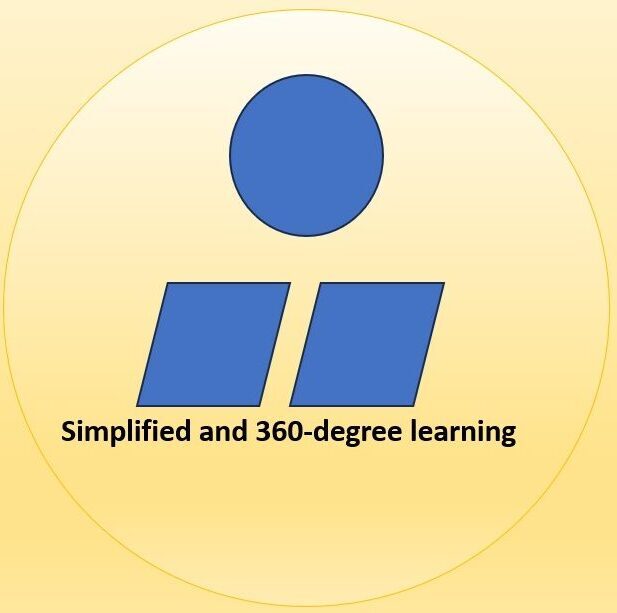
1. Selective Perception
Selective perception error leads to incorrect judgements due to dependency on few characteristics to evaluate others. People with Such perception consider a few or single instances of other people when deciding their performance or character . Selective perception creates misunderstanding or People usually do a decent job, but selective perception might lead to misunderstandings or obscure their best efforts. Selective perception creates misunderstanding or hide the better performance of people.
Examples
- In an organization the manager judges the employees based on bad performance observed few times and ignores the good performance performed by employees most of the times.
2. Parents with this perceptual error can judge the children based on bad performances in a single subject and ignores the good performance of children in other subjects
2. Stereotyping
Stereotyping is a perceptual error that results in individuals judging others based on general assumptions or a general perspective about people. The general mindset or common assumptions of the majority of individuals in society allow them to make inaccurate judgements or decisions.
Example
1. Many areas of Indian society hold a general perception that women managers have limitations compared to their male counterparts, which can reduce their performance. Hence, many companies are avoiding appointing women managers for specific responsibilities. They designate male managers to handle those duties instead.
2. Medicine, engineering, and management education are the only successes. This is a generalised perception, specifically in Indian society. This generalised perception prevents or restricts the students from using other areas as paths to success. Regardless of the numerous success areas for careers, the majority of Indian students focus on engineering, medicine, and management education.
3. Halo Effect
This perceptual error leads to incorrect judgements about individuals, as those affected focus on a single positive factor while disregarding the many other negative factors.
Examples
1. Physical personality may influence the halo effect, leading people to judge others based on appearance; however, other traits are often more influential and positive than physical personality alone. Some people with this perception error assume the other traits are positive, using physical appearance only.
2. The teacher judges the student based on single-subject performances and ignores those in other subjects.
4. An interviewer may ignore other factors and judge a candidate solely on their communication skills.
4. Horn Effect
Being based on the single trait or instance which is negative leads to creating the negative perection towards that person. One negative trait of an individual causes the whole judgement to be negative.
Example
1. An employee is considered irresponsible if they come late once; however, that employee regularly comes at the right time. The horn effect perceptual error leads to the wrong perception of any person or employee based on a single trait or incident.
2. Someone who makes mistakes at once. The observer with this perception may assume that the person always makes mistakes. This type of perceptual error makes any person’s mind make the judgement based on a single incident irrespective of the whole performance of that person who made the mistake once.
5. Attribution Errors:
This type of perceptual error enables an individual to consider the mistakes of others and ignore their own mistakes. At the time of self-mistakes, such persons seek excuses and reasons to justify the mistakes done by them. Such people make the same mistakes when done by others and judgements about them.
Examples
1. The boss in the office always judges the employees as irresponsible when they come late and ignores when the boss himself comes late. In such a case, the boss justifies the reason for being late due to traffic.
2. Many times the teacher, when coming late to the class, gives excuses or reasons and judges the students as undisciplined when the students come late. In this case, the principal has an attribution error or perception.
6. Contrast Effect
This perception enhances the attention when the other candidates are weak. The contrast effect can make the present impression of the normal candidate the best compared with the weak candidates who were with him.
Example
1. In the recruitment and selection process of a managerial position, the interviewer always focuses on the best candidates out of all those present and ignores the weak performances of all. Any one little good can be considered the best candidate in the interview when other candidates are very weak in performance.
2. If an average candidate is interviewed right after a weak one, then that candidate is considered a very strong candidate. This is all due to the perceptual error contrast effect.
3. Marketing and selling strategies show expensive products or services to the customers first and then show how more affordable the product is than the expensive product.
7. Primacy Effect
This perceptual error enables an individual to have a tendency of giving more weightage to the initial information about the person or incident and ignoring the subsequent information. In this case, an individual’s mind places greater importance on the initial information received.
Example
1. Many times in the interview of any organisation, the first impression of candidates can often shape the overall performance or evaluation of the interview; however, later information may provide contradictory evidence.
2. In a classroom of a college or school, when a new student answers the question asked by the teacher, it influences the teacher and enables that teacher to judge that student as an intelligent student.
8. Recency Effect
This perceptual error belongs to the tendency of an individual to emphasise the most recent information or incidence or interaction to make judgement instead of earlier ones or the past.
Examples
1. In the organisation, when recent performance given by employees may get the attention of seniors to promote and reward in the case of the recency effect of perception.
2. In sport, the recent performance of a sportsperson influences the decision-making of selectors and fan preferences. Such a tendency may influence the selection of a brand ambassador.
3. This type of tendency may be used by fraudulent persons who initially behave like more compatible people, and later they make their purpose fraud.
9. Illusion of control
Such a type of tendency belongs to the virtual belief to control the situation or incidence or any action.
Example
Many people have the belief that some religious persons can influence the others or can solve the problem. Based on such
In the

